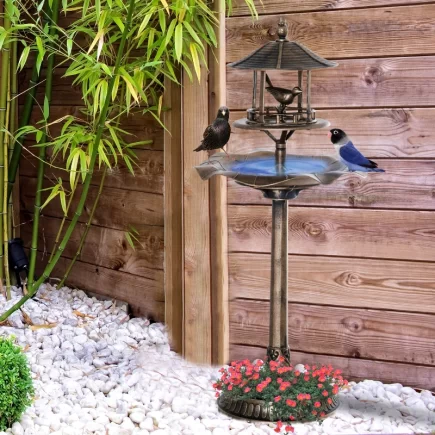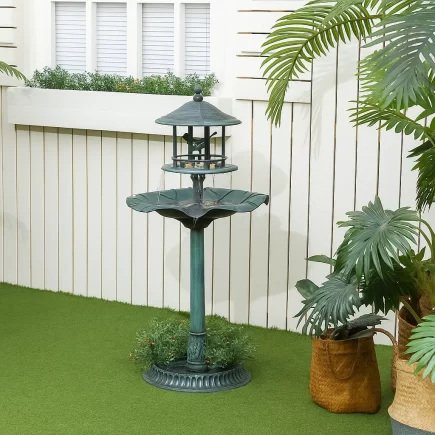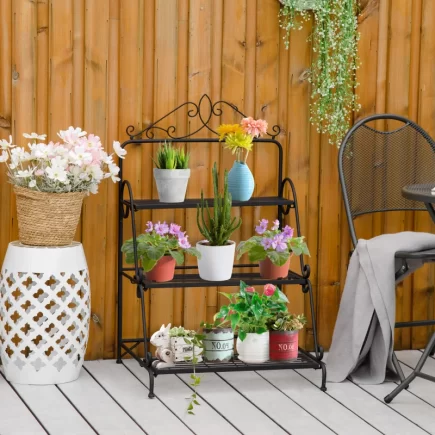Creating a tumbling composter is a straightforward and efficient way to turn organic waste into nutrient-rich compost for your garden. Whether you want to speed up your composting process, reduce your carbon footprint, or enrich your soil naturally, a DIY tumbling composter is the perfect solution. This article will guide you through the process of making a tumbling composter from start to finish, with clear, actionable steps, helpful tips, and common troubleshooting advice to ensure your composting success.

Materials Needed
Before starting, you’ll need to gather a few basic materials. Here’s what you’ll need for your DIY tumbling composter:
| Materials | Details |
| 55-gallon trash can with lid | Black is ideal as it absorbs heat, aiding decomposition. |
| Bungees | Used to secure the lid of the can. |
| Drill with a 5/16″ bit | For drilling ventilation holes in the drum. |
| Water | To maintain moisture in the compost. |
| Composting materials | A mixture of “greens” and “browns.” |
Step 1: Preparing the Container
Choosing the Right Drum
Start by selecting a 55-gallon can or a 50-gallon food-grade drum. The container must be large enough to accommodate the composting materials, but it should also be small enough for you to move around easily. The key is to make sure that the drum is food-grade if you’re using a recycled drum.
Creating Air Holes for Proper Ventilation
Why Ventilation is Important:
Composting relies on aerobic microorganisms, which break down organic matter using oxygen. Without proper ventilation, the microorganisms cannot perform their job efficiently, and the compost may not decompose properly. Additionally, poor airflow can lead to unpleasant odors and slow decomposition.
How to Drill the Holes
- Hole size and Placement:
- Hole Size: Use a 1/2-inch (12 mm) drill bit for optimal airflow.
- Holes Spacing: On the sides of the drum, Position holes approximately 6 to 8 inches (15 to 20 cm) apart, both vertically and horizontally, to ensure even aeration. This ensures that the air is evenly distributed throughout the composting material.
- Hole Distribution:
- For a standard 55-gallon (208-liter) barrel, aim for approximately 20 to 30 holes.
- Drill holes around the entire barrel, including the top and bottom, to facilitate proper ventilation and drainage.

Step 2 : Attaching the Hinge (For the Lid)
To make the lid on your compost barrel functional, you’ll need to attach a metal hinge. This will allow the lid to open and close easily while staying securely attached to the barrel.

Instructions:
- Align the hinge along the edge where the lid meets the barrel. Make sure it sits evenly across both parts.
- (Optional) Use a marker to mark the screw hole positions for better accuracy.
- Using a power drill, fasten the hinge to the barrel with self-tapping screws. Hold the hinge steady while drilling to keep it aligned.
- Ensure that the hinge is firmly attached and straight so the lid can open and close smoothly.
Step 3: Assembling the Hatch
Why a Hatch is Important
The hatch allows easy access to both add fresh compost material and remove finished compost. It also helps manage the moisture and airflow, preventing the compost from becoming too compacted.
Marking and Cutting the Hatch
- Positioning the Hatch
Decide where on the drum you want to cut the hatch. Ideally, it should be positioned on the side of the drum that faces the user when the composter is in place, allowing easy access. - Size of the Hatch
Mark a U-shaped hatch approximately 10 inches by 14 inches. This is a large enough opening to comfortably add materials and remove finished compost.

- Cutting the Hatch
Use a hacksaw to cut along the three sides of the U-shape (bottom and two sides), and a utility knife to score the top side. This will create a hinged lid that swings open and closed.

The utility knife helps create a clean edge along the top, which will allow the hatch to stay closed when not in use.
Attaching a Galvanized Latch for Secure Closure
- Latch Placement
Install a galvanized latch at the top of the hatch. The galvanized material will resist rusting from moisture and ensure the latch lasts over time.

- Securing the Latch
Use strong screws to attach the latch to the drum. Make sure the latch secures the hatch tightly to prevent any compost from spilling out during rotation. Check that the latch opens and closes smoothly.

Step 4: Constructing the Base
Why a Base is Important:
A sturdy base is crucial to ensure the drum rotates smoothly. It prevents the composter from tipping over while rotating and can also improve the overall stability of the composter.
Building the Base with Pressure-Treated Wood
- Materials
Use pressure-treated 2x4s for the frame. These are resistant to rot and can withstand outdoor weather conditions, ensuring durability for your composter. - Attaching Casters
- Attach casters (wheels) to each of the four corners of the base. Casters make it easy to move the composter around, which helps in turning the drum for better agitation of the compost.
- Use 1.5-inch stationary caster wheels that can hold the weight of the drum and compost. You can find casters rated for heavy-duty outdoor use to ensure durability.

Position the wheels on the longer sides of the base. This allows for easier rotation, as the composter will be balanced, preventing tipping during rotation.
- Leveling the Base
Make sure the base is level so the drum sits evenly and can rotate freely. If the base isn’t level, it could cause the drum to tilt, which might make it harder to tumble and mix the compost.
Step 5: Setting Up the Composting System
Layering Materials: Greens and Browns
- Why Layering Matters
Layering different types of materials creates an ideal environment for microorganisms to thrive. Too much of one type of material (either greens or browns) can disrupt the decomposition process, so balance is key. - Greens (High-Nitrogen Materials)
These include vegetable scraps, coffee grounds, grass clippings, and manure. They are rich in nitrogen, which is essential for the microorganisms responsible for breaking down organic matter.

- Browns (High-Carbon Materials)
These include dry leaves, straw, shredded newspaper, and wood chips. Carbon provides the energy microorganisms need for decomposition. - Layering Strategy
Follow a general 2:1 ratio of browns to greens for optimal composting. This means that for every two parts of carbon (browns), you should add one part of nitrogen (greens).
Finishing the Compost
Your compost is ready when it turns dark, crumbly, and has an earthy smell. The process usually takes about 4-6 weeks, depending on the materials and the conditions of the composter.
Uses for Finished Compost
Once your compost is finished, it can be used in various ways:
- Garden soil enrichment: Add compost to vegetable gardens, flower beds, or shrubs.
- Mulch: Use it as mulch around plants to retain moisture.
- Natural fertilizer: Use compost as a natural, chemical-free fertilizer for your plants.
This guide has covered all the essential steps for making and maintaining a tumbling composter, helping you create nutrient-rich compost quickly and efficiently. Composting with a tumbler is a great way to contribute to a healthier environment while enhancing the growth of your plants. For more gardening tools and products, visit Aosom’s Garden Tools Collection to find everything you need for your composting projects.
FAQs
1. What is the disadvantage of a compost tumbler?
Compost tumblers can be expensive and require regular turning. They also have limited capacity and can be difficult to use in colder climates where decomposition slows down.
2. What are two mistakes that we should avoid when we prepare compost?
Avoid adding too many acidic materials like citrus, and don’t neglect the balance of greens and browns. Too much of one can slow down decomposition or cause unpleasant odors.
3. Can I Put Moldy Food in Tumbler Compost?
Yes, moldy food can go in a compost tumbler as it still provides nutrients for microorganisms, but avoid adding large amounts of dairy or meat, as they can attract pests.
4. Should Compost Tumblers Be in Sun or Shade?
Compost tumblers should ideally be placed in partial sun or shade. Too much sun can dry out the compost, while too little can slow down decomposition due to insufficient heat.





















